Show Coverage: DEMA 2016
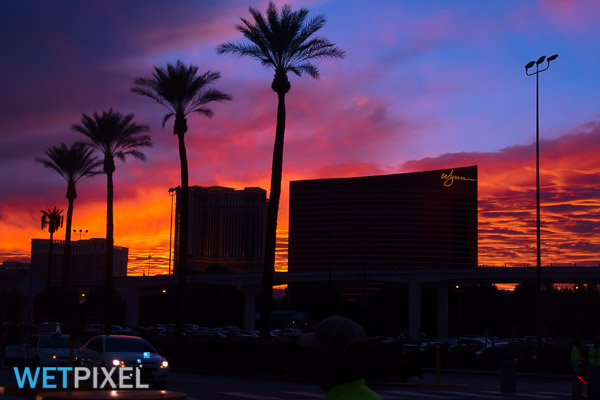
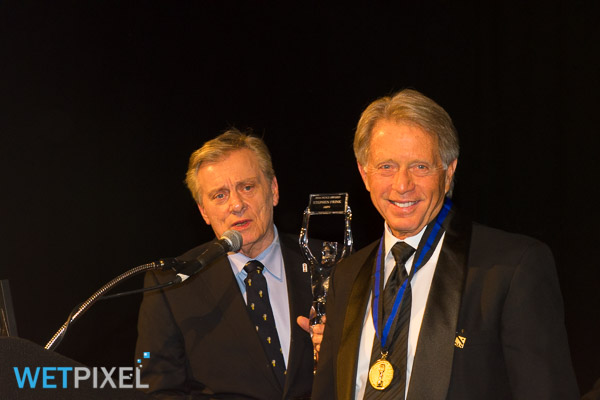
Stephen Frink receives NOGI award
Well known underwater photographer and frequent contributor to Wetpixel, Stephen Frink, was awarded a NOGI Award at a gala dinner ceremony held during DEMA. In the words of the citation: “Stephen Frink, one of the world’s most celebrated underwater photojournalists, started out in a small studio in Key Largo, Florida, renting out cameras and processing film for underwater photographers. However, he soon found himself taking on photo assignments and writing articles – gradually turning his talent for underwater photography into a gateway to the dive life. With his wife and favorite model, Barbara Doernbach, he traveled the Caribbean as a photojournalist for Skin Diver magazine for 17 years and then moved on to Director of Photography for Scuba Diving magazine, earning his PADI Divemaster rating along the way. For the past six years, Stephen has been the Publisher of DAN’s Alert Diver magazine, transforming it from a strictly information-focused publication into a visually appealing quarterly.”
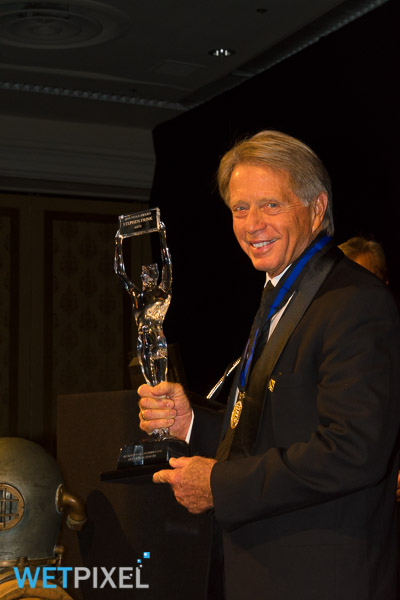
NOGI awards are considered the “Oscars” of the underwater industry and the Wetpixel community would like to heartily congratulate Stephen on receiving his.
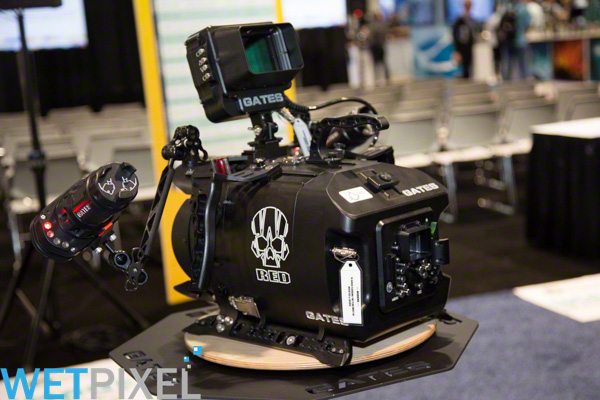
Gates Underwater Products
Our first appointment of the day was John Ellerbrock of Gates Underwater Products. John explained how he views the “professional” video camera and housing market. He divides into 4 categories: Digital cinema, broadcast, TV commercial and natural history. He stressed that each sector has different needs and requirements for their equipment and that the tools they used need to be specifically shaped and customized in order to fulfil these.
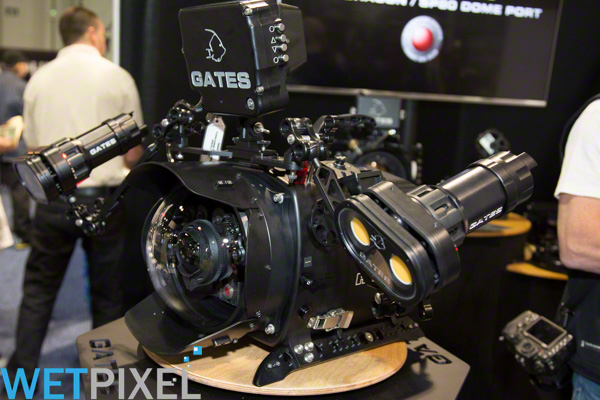
He then showed us the latest iteration of the Deep RED housing. Now named Deep Weapon, this housing has been upgraded to cater for RED cameras all the way from Epic, via Dragon and now to Weapon. Upgrading costs around $3,800, so the longevity of the housing makes it attractive from a commercial standpoint. RED has now committed to keeping the current control interface, DSMC2, until at least 2020, so there will be some stability in the infrastructure.
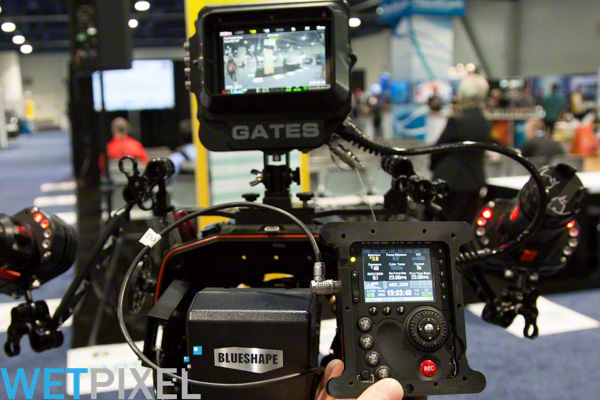
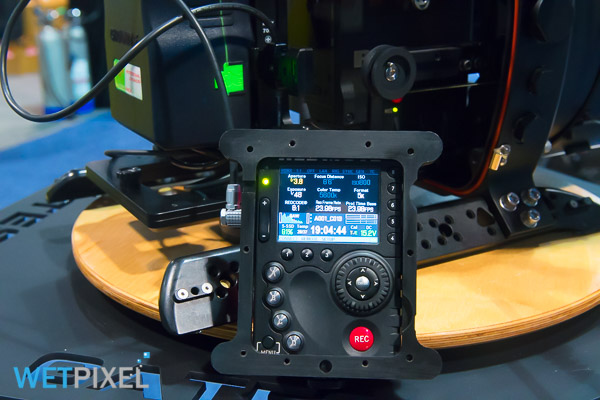
Red had stopped supporting wireless control of their original Redmote with DSMC2, but the team at Gates was able to persuade them to provide wired control. This is critical as the Redmote controls the functions on this housing. John feels that the wired connection is actually a better solution as it minimizes potential RF interference.
He went on to describe the Deep housing as a “Swiss Army” housing with a huge range of potential options to suit almost every conceivable use.
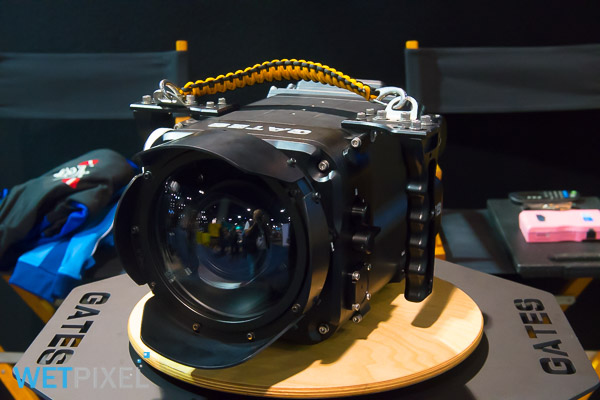
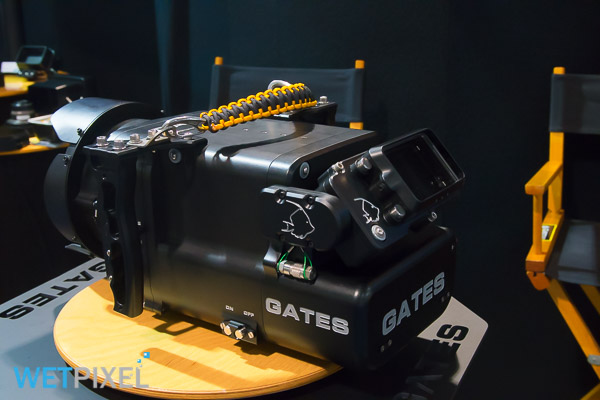


Gates released a new housing at the Wildscreen Festival. The Pro Action housing is a “pared to the essentials tool” for fast moving challenging environments and shoots that is designed to accommodate RED DSMC, DSMC2 and Arri Mini cameras. It weighs around 18kg and can be carried in a small carry on compatible case.
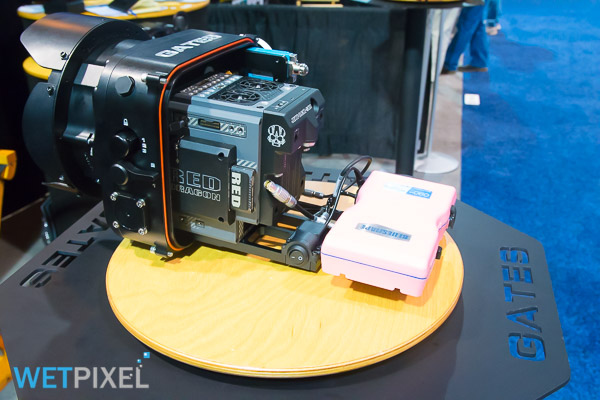
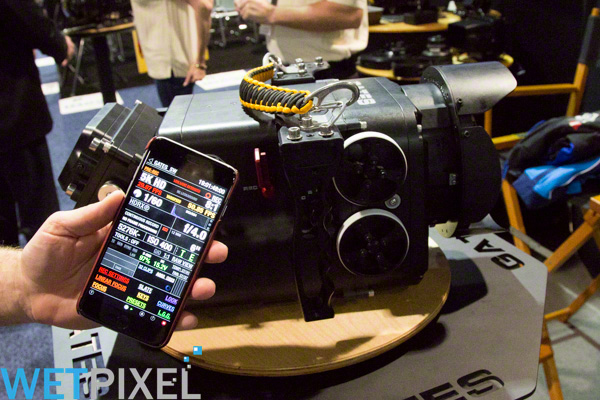
It relies on using presets that have been preloaded into the camera using remote control or, in the case of RED, via the Foolcontrol iOS app.
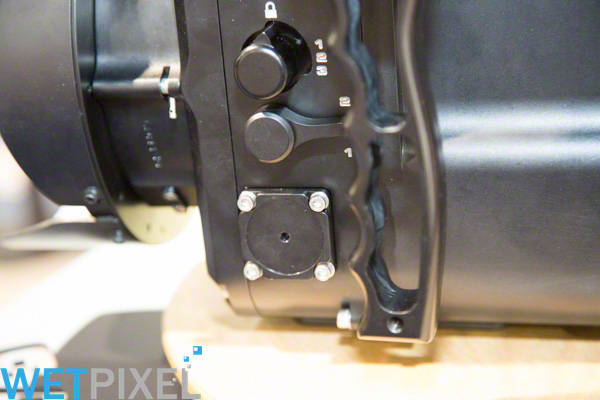
There is the ability to load two presets as standard with DSMC2, and the option of adding a further 4 with the addition of the Sidekick interface.
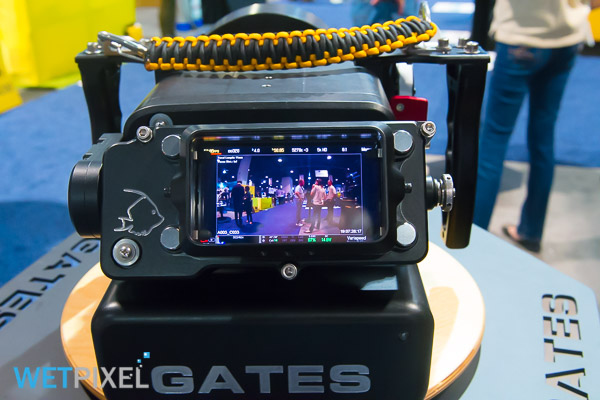
The housing features two ports, one of which is dedicated to a video out feed. The housing has a built in rear mounted tiltable Transvideo ST5 monitor which has assignable smart corners for peaking, vector scopes etc. The monitor and camera are all activated via a single power switch.
Lens support is primarily for SLR lenses or small PL mount. The housing has interchangeable lens port mounting plates, but there is a new smaller 6” dome port designed specifically for this housing. Gates calls this their 60 series port system.
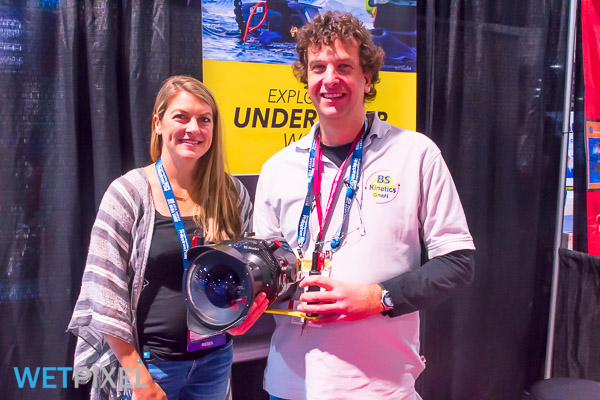
BS Kinetics
Bodo Sutterer of BS kinetics showed us his carbon fiber housing for the Leica SL camera. He was approached by the company and agreed to manufacture a bespoke housing for them.
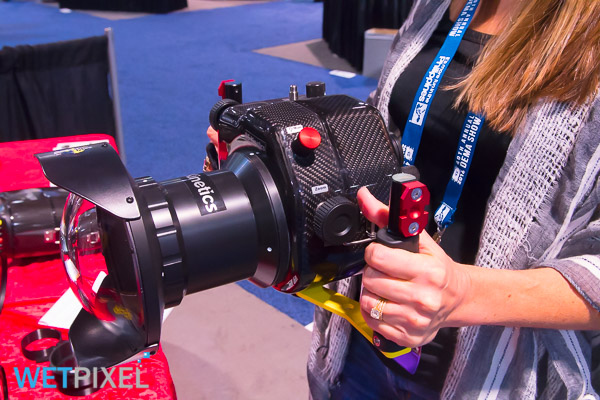
It has been tested to 80m and is compatible with the 24-90mm lens for which Bodo provides a specific zoom ring. One of the uses that has been envisaged for this housing is surf photography, so it is equipped with a small 6.4” dome.
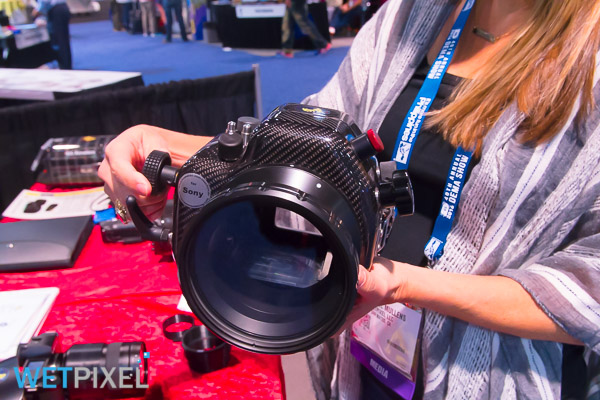
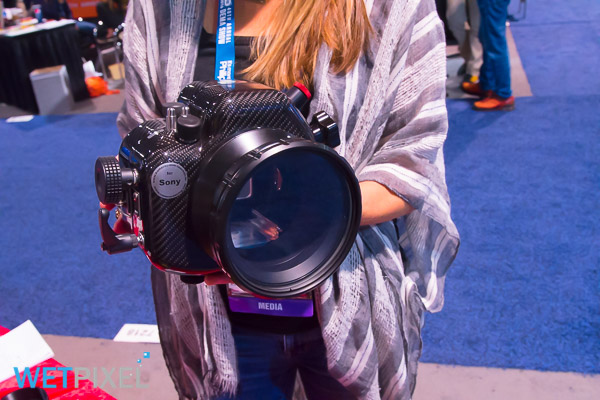
He then showed us his new and very light housing for the Sony a7 II cameras.
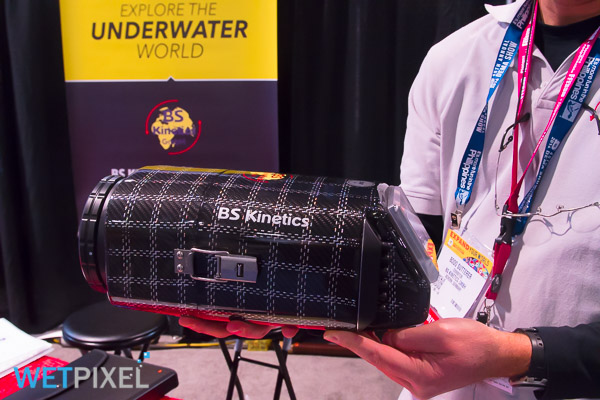
BS Kinetics has two interesting developments for video shooters. The first is a Negev housing for the JVCGY-HM170 camera. Unlike almost other 4K cams, this model allows the use of 4K recording when it is outputting to an external monitor.
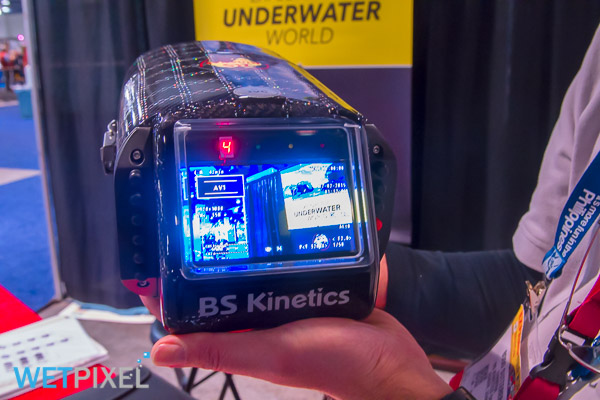
The Sony equivalent will only record in 2K when an external monitor is attached, so this requires the use of the camera’s own flip out monitor to frame and check focus, which results in very bulky housings.
Bodo has also “hacked” the control of the camera and there is full manual control of all camera functions via the buttons on the rear of the housing.
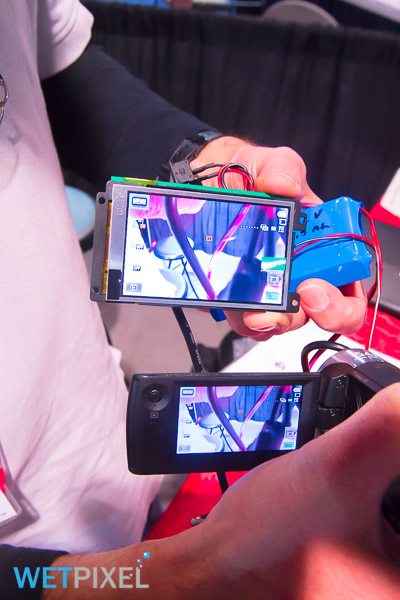
He also showed us another electronics innovation. Typically with camcorders, external monitors cannot display the camera information overlays. BS Kinetics now has a monitor that can do so and will be offering it as the monitor in their housings.
Bodo informed us that he will be supporting the Nikon D500, Canon 5D Mark IV, Panasonic GH5, Sony a6500 and Olympus OM-D E-M1 Mark II.
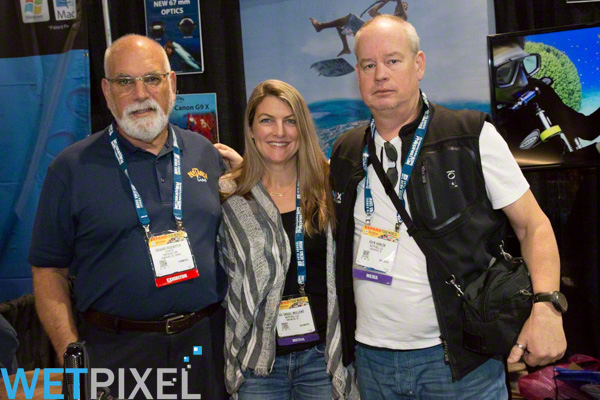
Fantasea
We joined Howard Rosenstein of Fantasea on their booth. He took us through the company’s range of polycarbonate housings for compact cameras, wet conversion lenses and LED lights.

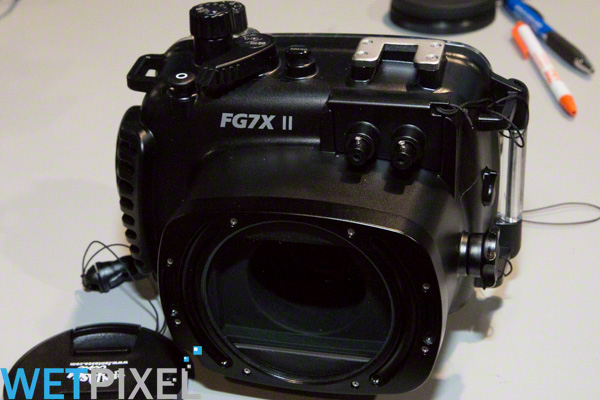
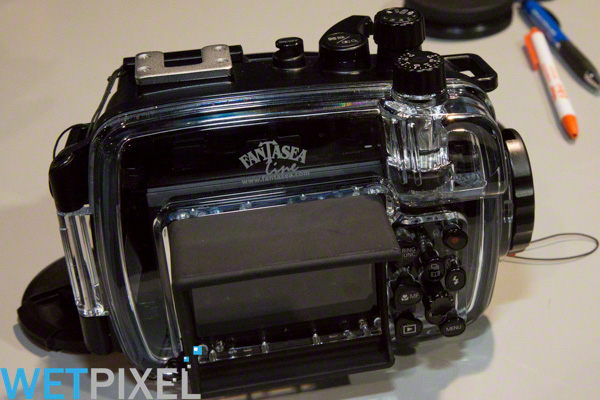
Fantasea currently offers housing support for the Canon G7X II, Canon GX9 and Sony RX100 Marks III, IV and V. All their newer housings will feature a 67mm thread on the port for accessory lenses. With some older housings, there is a 55mm thread with a step up ring, but this will be phased out in future models.
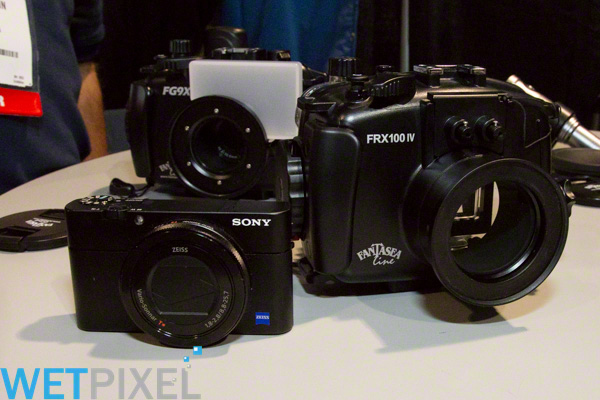
Howard has personally tested the RX100 Mk V underwater and was very impressed with its focusing ability, speed and video performance.
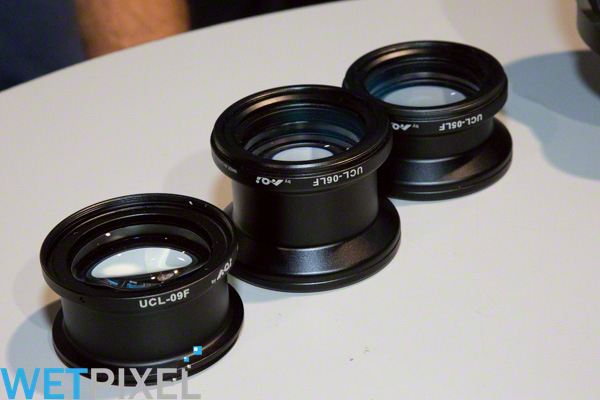
There is a family of new conversion lenses available. These include 3 macro and one wide angle lens. The UCL 05 is +6, the UCL 06 is +12 and the UCL 09 is +12.5. The latter is also designed to give very high quality results.
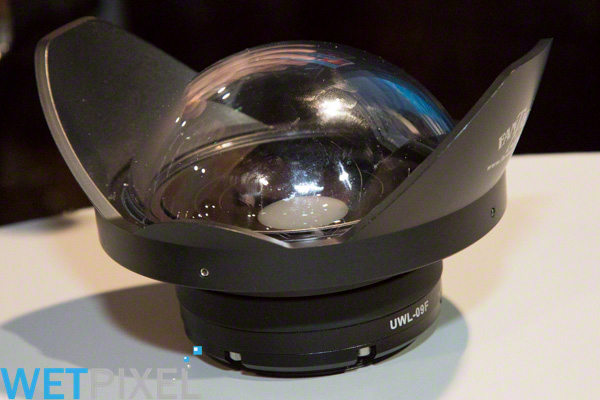
Their fisheye conversion lens offers an 130° field of view and has a rotating shade. It is shipped with two M67 mounting options, so that the lens cam be mounted in an optimum position on as wide a variety of housings as possible.
Fantasea are establishing a global network of service agents for any repairs that might be needed to its products.
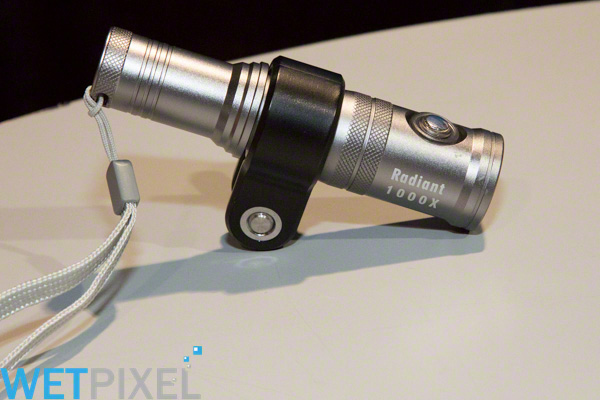
Lastly, Howard showed us the company’s two new lights. The Radiant 1000 X offers 1000 lumen in a very compact package. It is packaged with 2 18650 batteries, YS mount and a charger. Light modes are high, medium, low, red, flashing and SOS. There is an integrated battery meter around the control switch and it will burn for one hour at full power. Obviously once the first battery is depleted, this can be replaced with the provided spare. It will retail at $160 and will be available from March.
The second light is the Radiant 3000F. This offers 3000 lumen of output with a COB LED panel. It has three stops of output, a spot mode and a 120° smooth even beam in wide mode. Other modes include red, blue, flashing and SOS. It is powered by two 18650 rechargeable batteries in a side by side configuration and they give a burn time of 1 hour at full power.
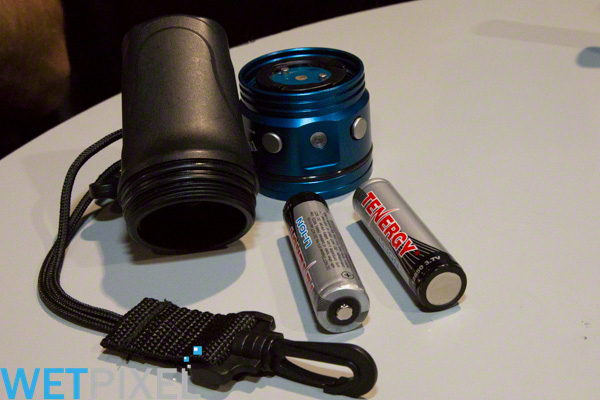
The torch is shipped with 2 spare batteries and Fantasea will be supplying an accessory range for the light which will include ball mounts and hand straps.
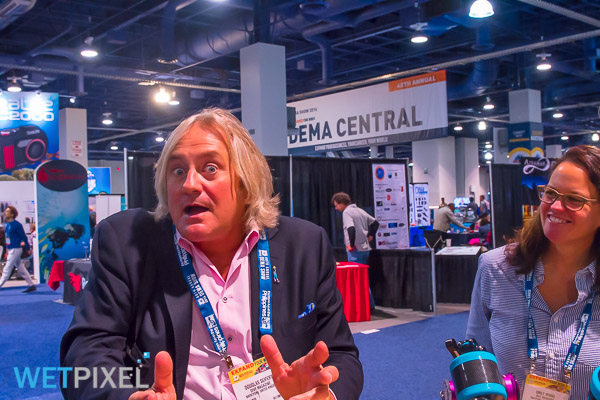
Fisheye Fix
With time pressure mounting as the show was about to close, I was fortunate to be able to meet up with Kaz Okada of Fisheye so that he could run me through the changes to their products. After their complete revamp to their light range last year, they have concentrated on refining it this year.
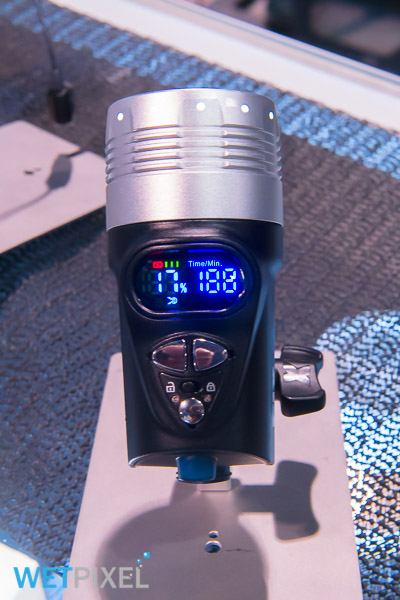
These refinements include a revamp of the way the LCD screens display the torch’s status. They now offer a percentage of output and remaining battery life in time, as well as a bar graph.
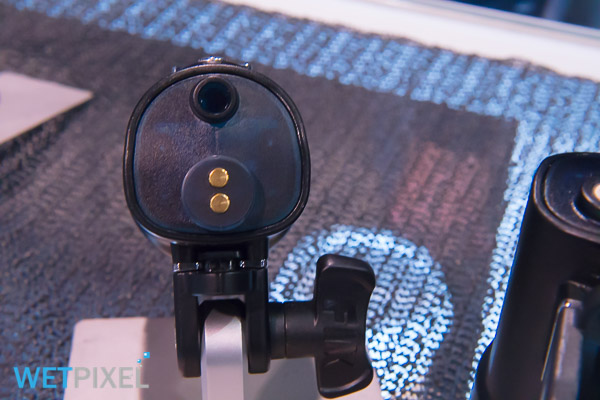
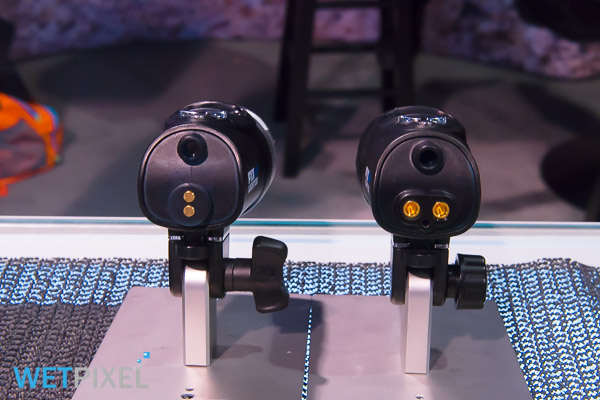
Another significant refinement is the charging. Kaz commented that the charging contacts that require the insertion of pins into charging sockets on the torch body can allow water to collect and degrade the charging.
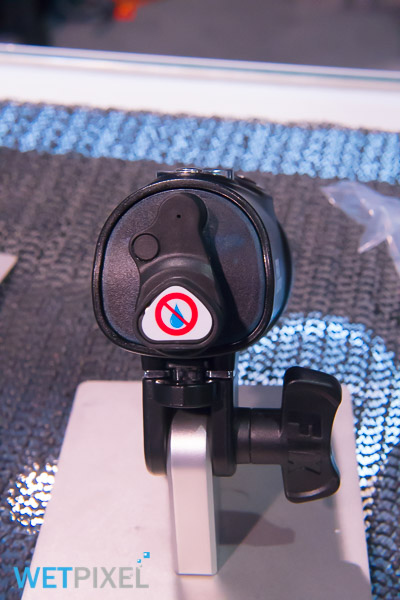
The new contacts are flush with the exterior and have a charging cap that fits over them to minimise this problem. The torches are also now fitted with magnetic reed switch that is activated by the new charging cap, ensuring that there is no current to the charging pins when the torch is in use.
Another refinement is an improved, reshaped bolt for the YS mount that will make it much easier to tighten.
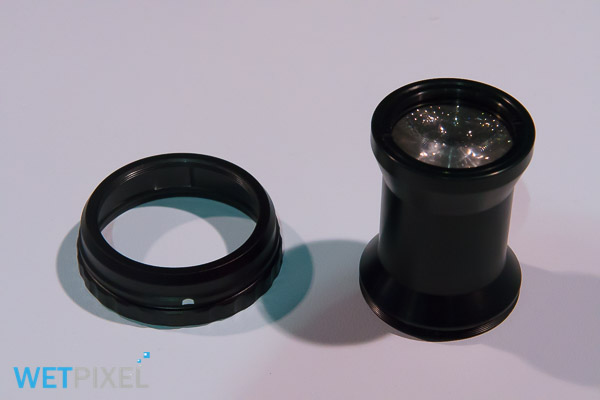
The last new product has been produced in conjunction with Noodilab. This is an optical snoot that can be attached to the FIX Neo lights to shape and direct the light. It consists of a push fit mounting collar with a screw-on lens element.
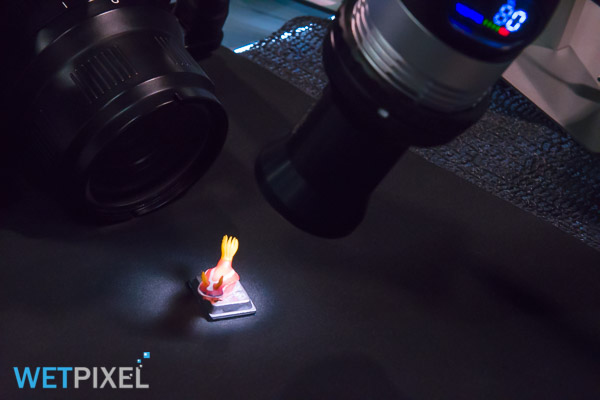
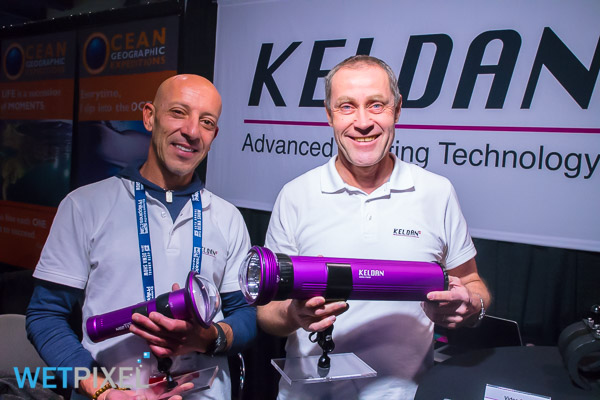
Keldan
Now really chasing about, I met up with Daniel Keller and Phil Simha on the Keldan lights booth. Daniel was keen to talk about his new filters that are all now available.

Imagine yourself underwater and you will rapidly realise that the light that surrounds you is not white. For video particularly, if a white light source is introduced, this can produce an unnatural looking light. Keldan has produced a series of blue filters for their lights that aim to correct the light’s output to the actual spectrum that is available at depth.
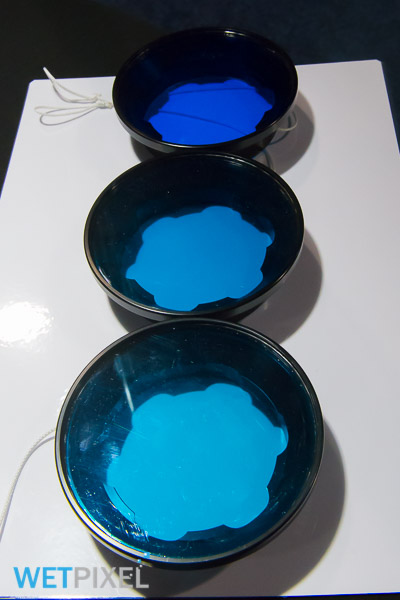
As such they are available in 3 strengths; shallow, medium and deep. As the amount and quality of light varies, these cannot be tied to a specific depth, but they correspond roughly to 5m, 10m and 15-20m.
The filters are now available for all Keldan’s lights, including the large 18X and 24x.
All Keldan’s filters have been designed using a spectrophotometer in a bespoke housing built as a special project by Nauticam.
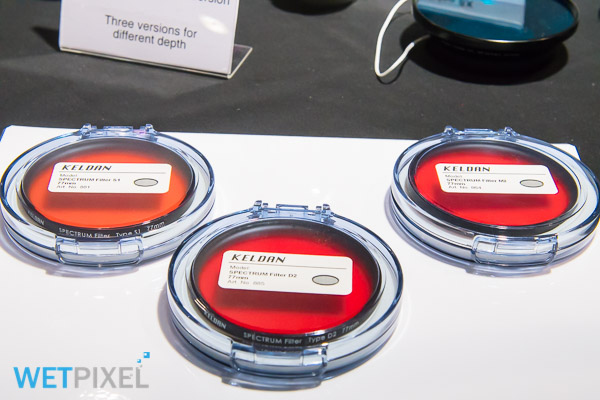
For cameras, Keldan’s Spectrum filters work in the opposite way by removing some of the ambient blue light to provide a more natural looking light at depth. Again offered in 3 strengths, Daniel’s testing shows that the medium strength effectively corrects so that the camera will “see” ambient light perfectly at 7.5m (25 ft). This means that by using it at that depth, a camera set to daylight white balance will be perfectly color balanced. As you go deeper, this 7.5m reduction is constant, so at 10m, the camera will actually “see” the color of light as if it was 2.5m (8 ft) of depth and so forth.
Beyond 15m, the amount of red light drops off to almost nil (it is 2% at 15m (50 ft)). The Spectrum filters are currently available as glass screw on versions, but Daniel is looking into gel filters for fisheye lenses.
Keldan’s lights have a new driver that offers a seamless intensity control over 9 steps from 2.5% output. Each step is 50% greater than the previous, giving a logarithmic smooth adjustment. There is also an off position on the switch which is separate from the travel position, allowing the light to be adjusted with one hand. This change will phase in over the next month or so.
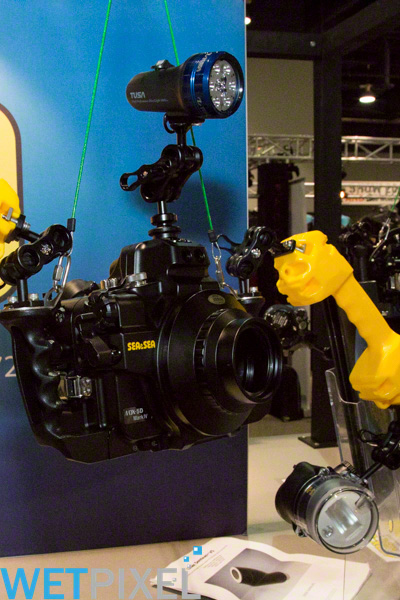
Sea&Sea
As we were leaving the hall, we were able to have a quick look at Sea&Sea’s housings.
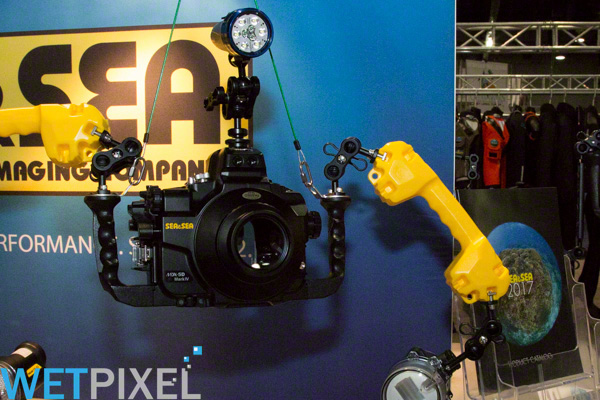
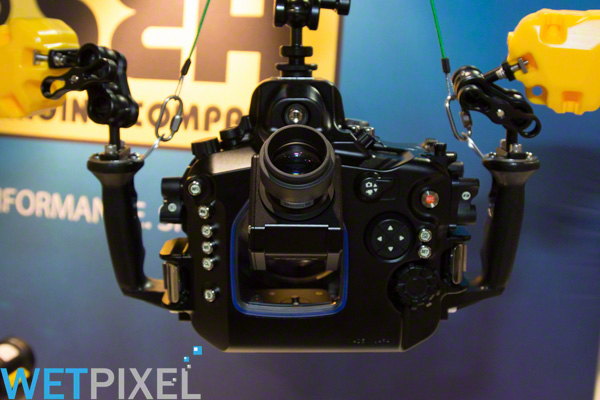
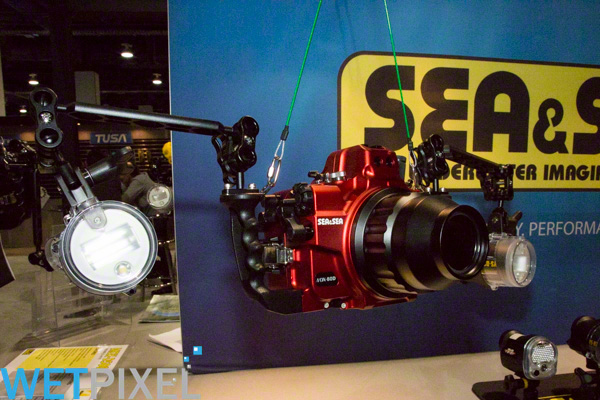
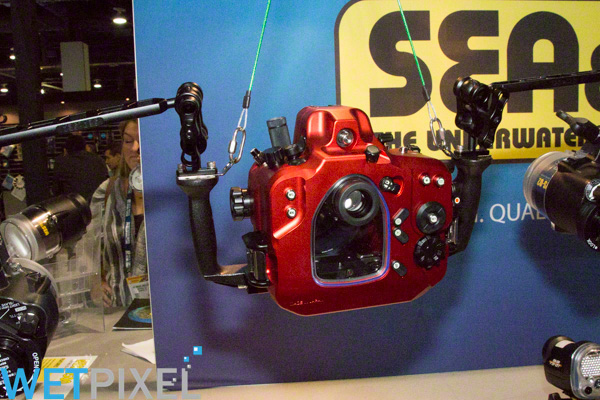
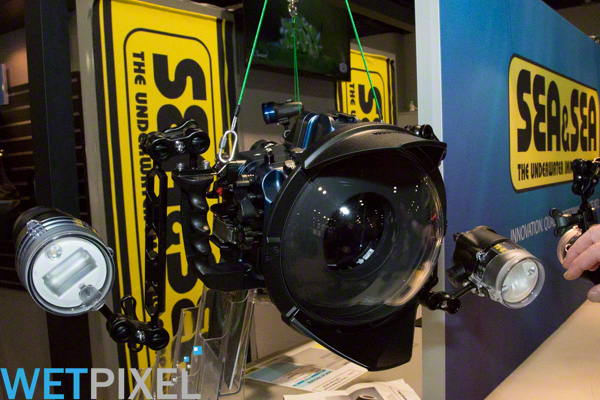
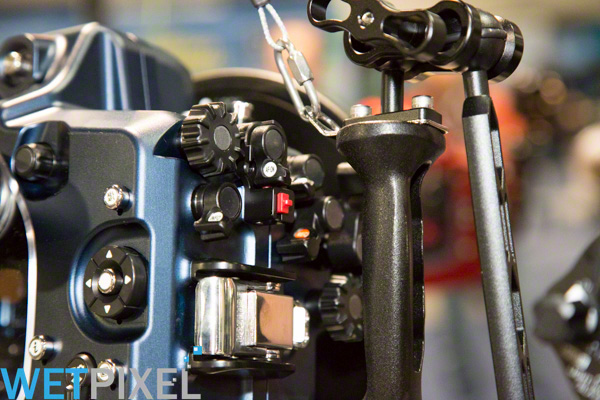
No one was available to talk us through them, but on display were new MDX range housings for the Canon 5D Mark IV, 80D and Nikon D500 and an RDX series housing for the Sony a6300. The latter is available in a limited edition orange color.
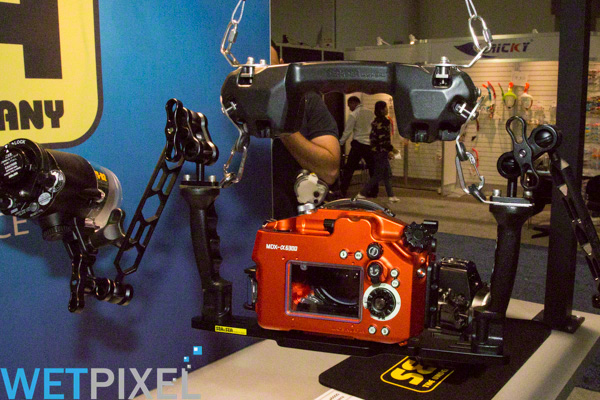
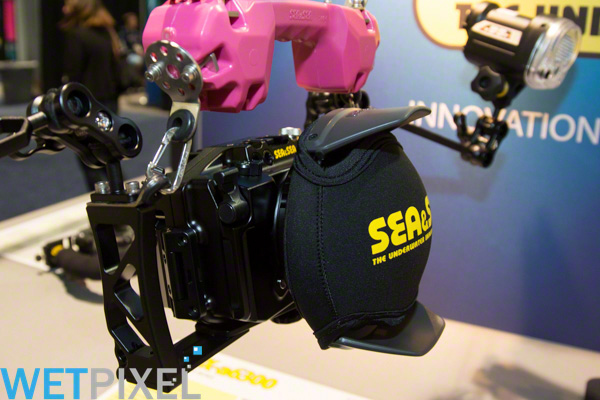
Sea&Sea are using a new machining method that allows the housings to be lighter than previous. The 5D Mark IV and D500 housings both have electro optical converters available for strobe triggering, although these currently only offer manual output control. They are also fitted with 2 pin electrical triggering too, which offers manual control.
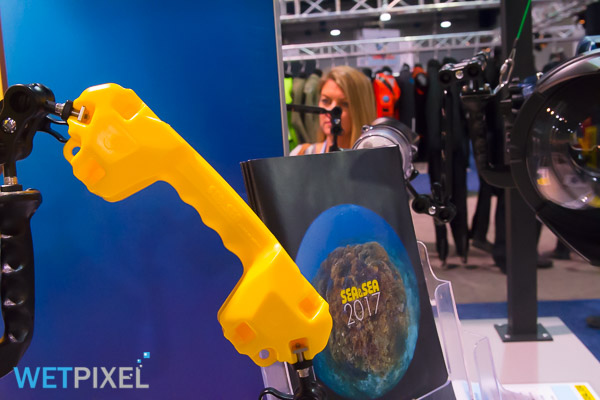
Lastly, Sea&Sea were displaying a buoyancy arm handle that is available in yellow or pink.
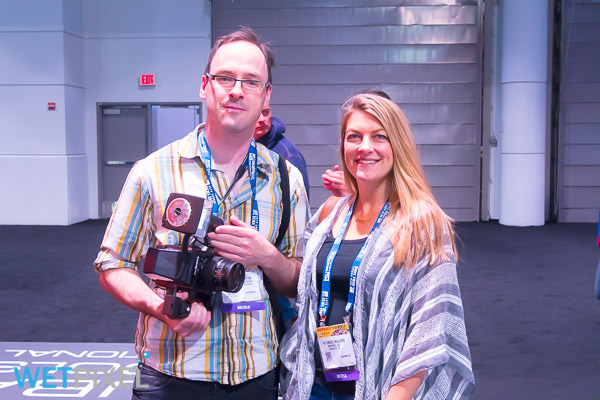
Inon
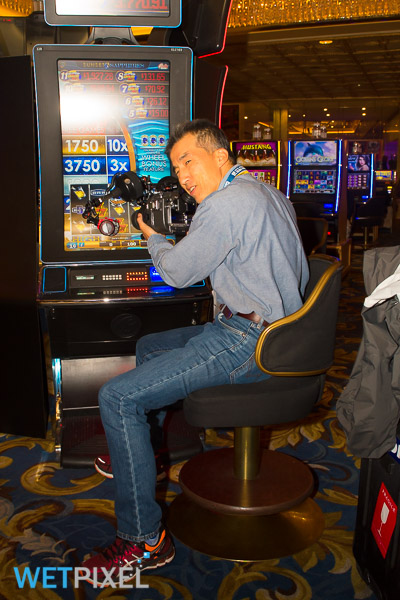
Time had run out in the convention center, so Inon’s Takuya Tori kindly agreed to present his company’s products in the hotel. He showed me the new UCL 67 close up lens.
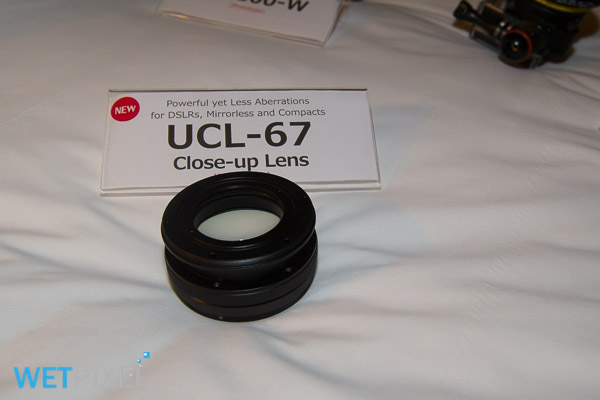
Takuya tells me that this is very high magnification and experimenting with it would suggest that it has a similar or greater amount of magnification to that of the current crop of super macro conversion lenses. It has also been redesigned to provide superior optical performance.
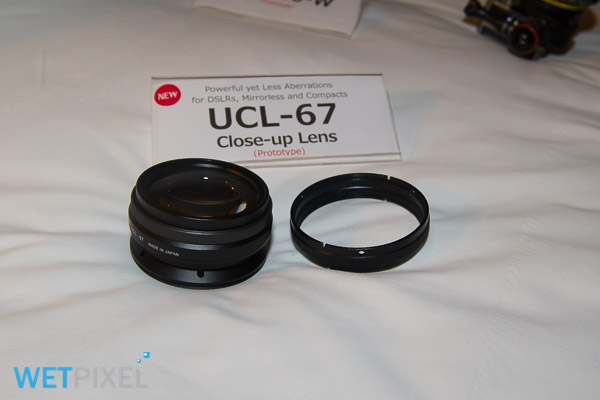
It has an M67 thread or bayonet fitting, and Inon will also supply an M67 stacking ring to allow two lenses to be used together. They also plan to offer a flip mount.
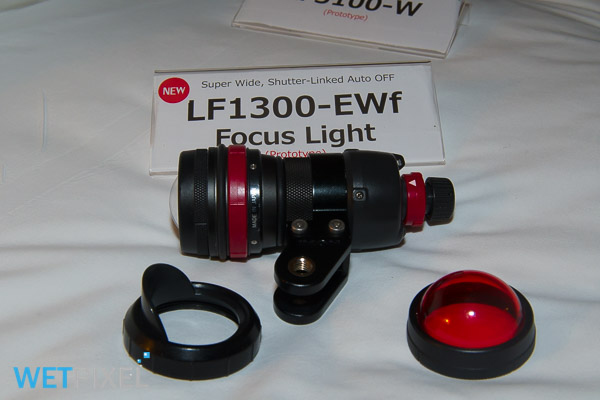
He then showed me the new LF1300 EWF focus light. This runs on 3 AA batteries and has the traditional Inon double O ring seal and gold battery compartment contacts. It is fitted with a dome lens that provides an even 100° beam at a color temperature of 5000°K. It is also fitted with a fast reacting flash quenching circuit that cuts out for only 0.2s.
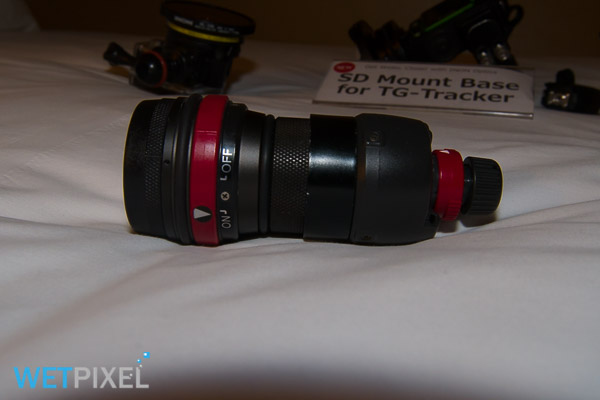
This can also be disabled via a rotating collar if the user wants to use the light for shooting video or other purposes. It has two intensity settings (1300 and 350 lumen) and offers 50 minutes at full or 220 at minimum power settings. It will ship with a YS mount, a red dome filter and a duckbill shade that prevents the light from pushing back into the camera lens when the light is illuminating subjects close to it.
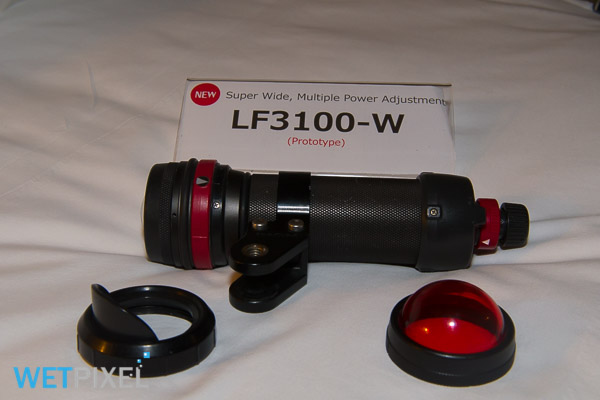
The next new light is the LF3100W video light. This is powered by 6 AA cells and has all the standard Inon features as listed above. It offers 6 step adjustment on a rotating collar and 2 steps via a rear dial offering a total output range of 50 to 3100 lumen at 5000°K. Burn times are from 45 to 150 minutes.
All the above products will ship in early 2017.
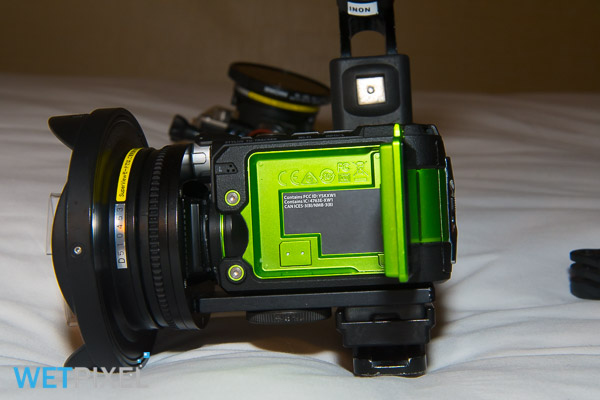
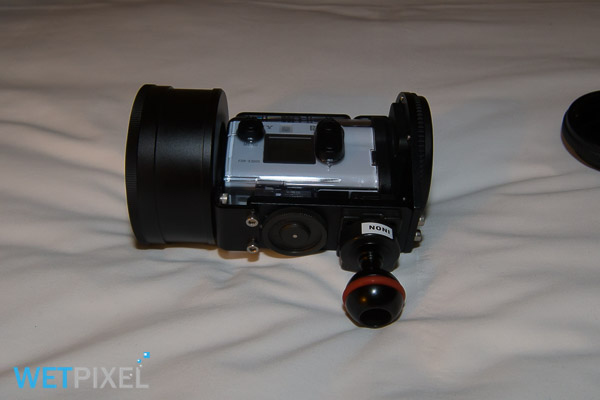
We also looked at the already existing SD mounts for the Olympus TG Tracker and Sony FDR-X3000/AS300 action cameras. These both allow the use of the lens system originally designed for GoPro cameras. Inon supply the 140° UFL-G140 SD semi fisheye lens and the 110° UCL-G165 SD wide close up lens. The latter will focus up to 5cm in front of the lens element.
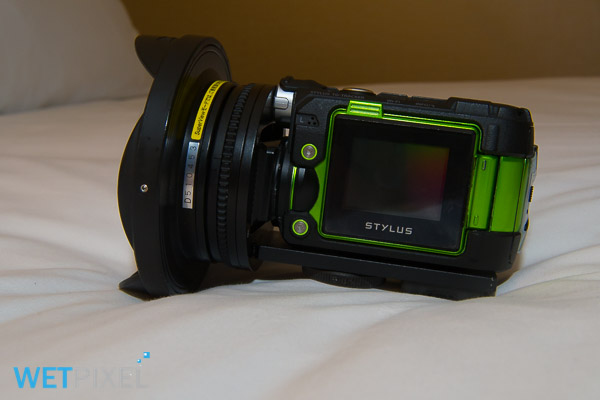
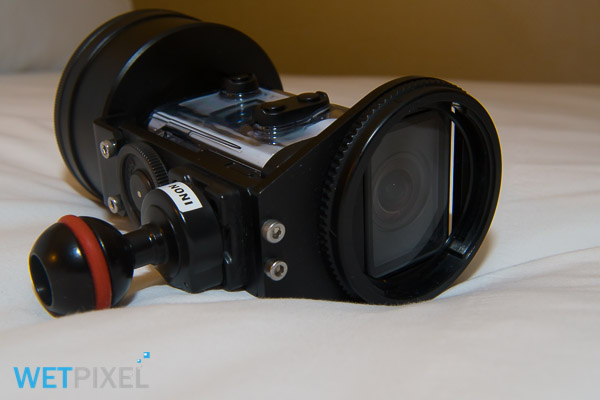
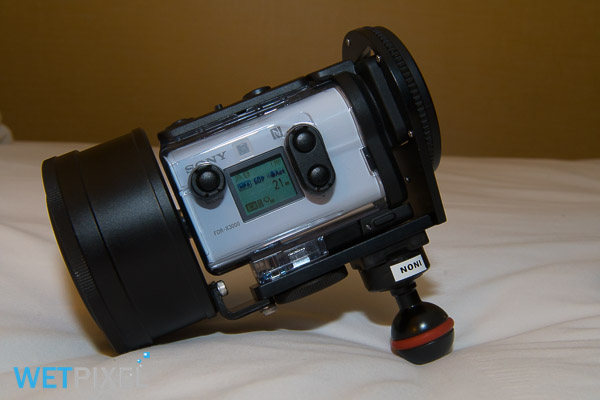
The SD mounts also offer a variety of mounting options. These include D holders, GoPro mounts and 1” ball mounts.
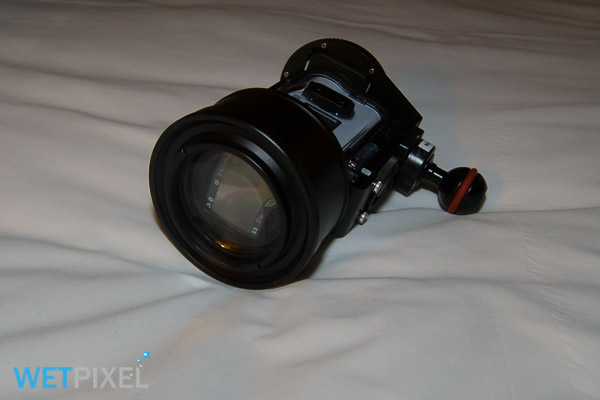
The Sony X3000 ships with a small monitor and Inon will be offering a small monitor housing so that it can be used underwater. It has a diopter that allows the screen to be magnified for improved viewing. The camera and monitor communicate via wifi, and Inon has cleverly mounted them close to each other to enable this. The monitor doubles as a remote and although the majority of its functions are not accessible via the housing, it does have a power switch that powers up both monitor and camera.
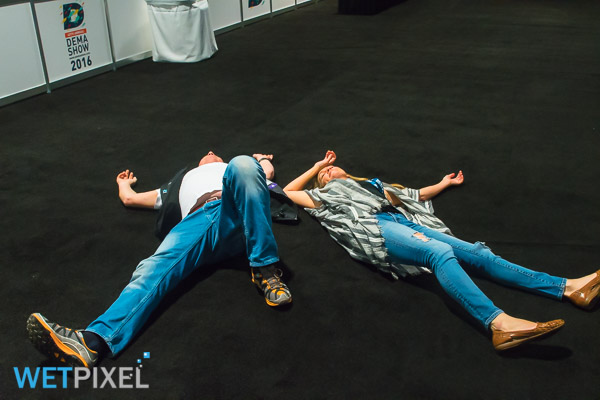
- Introduction.
- Booth Visits: Seacam, Aquatica, ULCS and Nauticam.
- Booth Visits: XIT404, SAGA, Vivid Pix, Lights and Motion, Subal and Ikelite.
- Wetpixel/DivePhotoGuide underwater imaging party.
- Booth Visits: CineBags, Isotta, Acquapazza, iDivesite, Backscatter
- Booth Visiits and Stephen Frink: Gates, BS Kinetics, Fantasea, Fisheye, Keldan, Sea&Sea, Inon